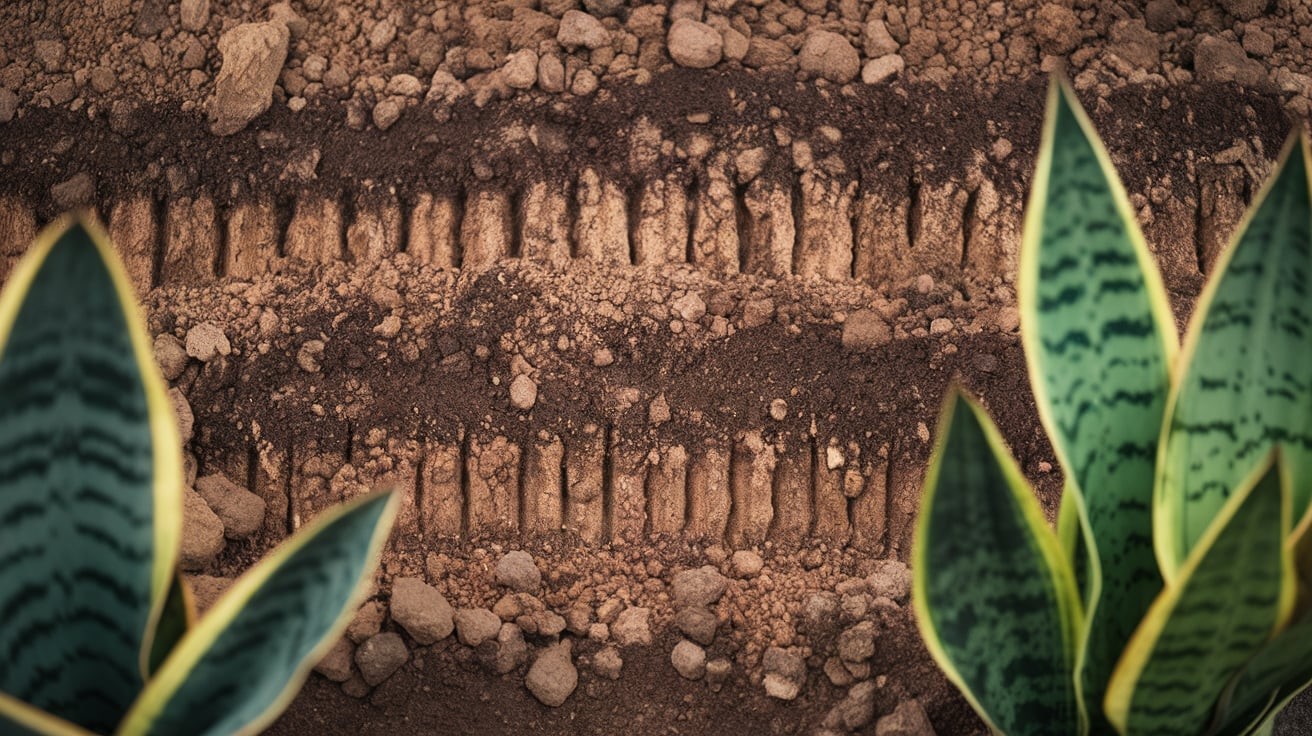The soil you choose for your indoor plants can have a significant impact on their health, especially for a resilient yet particular plant like the snake plant (Sansevieria). While these hardy plants are known for their ability to thrive in less-than-ideal conditions, selecting the best soil for snake plant indoor growth is essential for ensuring they stay vibrant and robust. Whether you’re a first-time plant owner or an experienced gardener, understanding the unique needs of your snake plant when it comes to soil is key to long-term success.
By the end of this guide, you’ll be equipped with the knowledge to choose the right soil for your indoor snake plant, incorporating eco-friendly and budget-conscious options that promote both plant health and environmental sustainability.
Key Takeaways
- Snake plants require well-draining, lightweight soil to prevent root rot and promote healthy growth.
- Eco-friendly and affordable soil options are easily accessible and effective.
- Choosing the right soil mix ensures your snake plant thrives in an indoor environment with limited space.
Table of Contents
Why Soil Matters for Snake Plants
When it comes to growing a healthy snake plant indoors, soil plays a critical role in the overall success of the plant. Although snake plants are known for their ability to survive in low-light conditions and tolerate neglect, the soil is vital for several reasons.
- Drainage: Snake plants are prone to root rot if their roots are sitting in soggy soil. A well-draining soil mix helps prevent excess moisture, ensuring that the roots stay healthy and oxygenated.
- Aeration: The soil should be light and airy, which prevents the roots from becoming compacted and ensures that they can access the nutrients and air they need to thrive.
- Nutrient Retention: While snake plants don’t require frequent fertilization, a good-quality soil mix will still retain enough nutrients to keep the plant healthy and growing.

Characteristics of the Best Soil for Snake Plant Indoor
When selecting soil for your indoor snake plant, there are several key characteristics to keep in mind to ensure the best growth environment:
- Well-Draining: Snake plants do not like to sit in waterlogged soil. The best soil will allow excess water to drain freely, preventing water from stagnating around the roots and causing rot.
- Lightweight and Airy: A good soil mix for snake plants should be light and well-aerated. This ensures that the roots can expand and breathe, which promotes strong root growth and helps prevent compaction.
- Nutrient-Rich: While snake plants do not require a nutrient-dense soil mix, a balanced one with moderate nutrients is essential for healthy growth and occasional flowering.

Best Soil Mix for Snake Plant: What You Should Know
The best soil for snake plants indoors is a mix that provides the right balance of drainage, air circulation, and lightness. A typical soil mix for a snake plant will contain three main components:
- Potting Soil: This serves as the base of your mix, providing necessary nutrients and structure.
- Perlite: Perlite is a lightweight volcanic glass that improves aeration and drainage in the soil, helping it retain the perfect balance of moisture without becoming soggy.
- Sand: Sand enhances drainage and prevents the soil from becoming too dense. It also adds structure and helps the soil dry out faster between waterings.
Recommended Soil Mix for Snake Plants
| Component | Purpose |
| Potting Soil | Provides essential nutrients for growth. |
| Perlite | Increases drainage and air circulation around roots. |
| Sand | Helps prevent compaction and improves soil texture. |

Ready-Made Soil Mixes vs DIY Soil Mix
You may wonder whether to purchase a pre-made potting mix or create your own. Both options come with their own advantages:
- Pre-Made Soil Mixes: Ready-made potting mixes designed specifically for succulents and indoor plants often come with the right balance of ingredients. These mixes are convenient, easy to find, and typically formulated to drain well. However, they can be more expensive, and some brands may contain synthetic fertilizers or chemicals you may want to avoid.
- DIY Soil Mixes: If you’re on a budget or prefer eco-friendly options, creating your own mix is an excellent choice. It allows you to control exactly what goes into the soil and customize it to fit the specific needs of your snake plant. Using potting soil, perlite, and sand can create the perfect, cost-effective soil mix for your plant.
Eco-Friendly Soil Choices
With an increasing emphasis on sustainability, many gardeners are turning to eco-friendly alternatives when it comes to soil. Here are a few options to consider when choosing soil for your snake plant:
- Coco Coir: This renewable material is made from coconut husks and is an excellent substitute for peat moss. It retains moisture well without becoming soggy, making it a great addition to your snake plant’s soil mix.
- Compost: Adding small amounts of compost to your soil mix can enhance its nutrient content without harming the plant or the environment.
- Peat-Free Options: As peat bogs are being depleted, choosing peat-free potting mixes ensures you’re not contributing to environmental damage.
Eco-Friendly Soil Brands for Snake Plants
| Brand | Features |
| Organic Potting Mix | Made from natural, organic materials |
| Coco Coir Blend | Sustainable, water-retentive, and eco-friendly |
| Peat-Free Soil | Environmentally friendly, reduces peat use |
How to Pot Your Snake Plant with the Best Soil
Potting your snake plant correctly with the right soil mix is crucial for its health and longevity. Here’s a simple step-by-step guide:
- Choose the Right Pot: Ensure the pot has drainage holes to prevent water from accumulating at the bottom.
- Prepare Your Soil Mix: Mix together potting soil, perlite, and sand in the recommended ratio.
- Place Your Snake Plant: Gently remove your snake plant from its current pot, shake off excess soil, and place it into the new pot.
- Fill with Soil: Add the prepared soil mix around the roots, pressing down lightly to eliminate air pockets.

Is Cocopeat Good for Snake Plants?
Cocopeat, made from coconut husks, is a fantastic option for improving the moisture-retention capacity of your soil mix while still ensuring good drainage. It is also a sustainable material, making it a preferred choice for eco-conscious gardeners. When mixed with perlite or sand, it allows the snake plant to thrive in a well-draining environment while still keeping the roots hydrated.
Conclusion
Choosing the best soil for your indoor snake plant is an essential step in ensuring its long-term health. By selecting the right mix—whether it’s pre-made or DIY—you’ll create an environment that promotes healthy growth and prevents common issues like root rot. Experiment with eco-friendly options like cocopeat and perlite, and remember that the right soil is key to thriving snake plants in your home.
Frequently Asked Questions
What is the best soil mix for snake plants?
A mix of potting soil, perlite, and sand is the best soil for snake plants, ensuring good drainage and proper aeration for healthy root growth.
What do snake plants grow best in?
Snake plants grow best in slightly acidic to neutral soil that drains well and does not retain excess moisture.
What should a snake plant be potted in?
A snake plant should be potted in a container with drainage holes and a well-draining, lightweight soil mix to prevent water from sitting around the roots.
Is cocopeat good for snake plants?
Yes, cocopeat is an excellent addition to the soil mix, as it retains moisture without making the soil soggy and is a sustainable alternative to peat moss.
How often should I repot my snake plant?
Snake plants should be repotted every 2-3 years or when they become root-bound, but always check the soil quality during repotting.
Can I use regular garden soil for snake plants?
Regular garden soil is too dense and retains too much moisture, which can cause root rot. It’s better to use a specialized, well-draining mix.

Robert Martin is a passionate blogger and versatile content creator exploring the intersections of personal finance, technology, lifestyle, and culture. With a strong background in financial literacy and entrepreneurship, he helps readers make smarter money moves, build sustainable side hustles, and achieve financial independence.
Beyond finance, Robert shares his insights on home decor and gardening—offering practical ideas for creating beautiful, functional living spaces that inspire comfort and creativity. He also dives into the dynamic worlds of sports and celebrity news, blending entertainment with thoughtful commentary on trends that shape today’s pop culture.
From decoding the latest fintech innovations to spotlighting everyday success stories, Robert delivers content that’s informative, relatable, and actionable. His mission is to empower readers to live well-rounded, financially confident lives while staying inspired, informed, and ahead of the curve.




